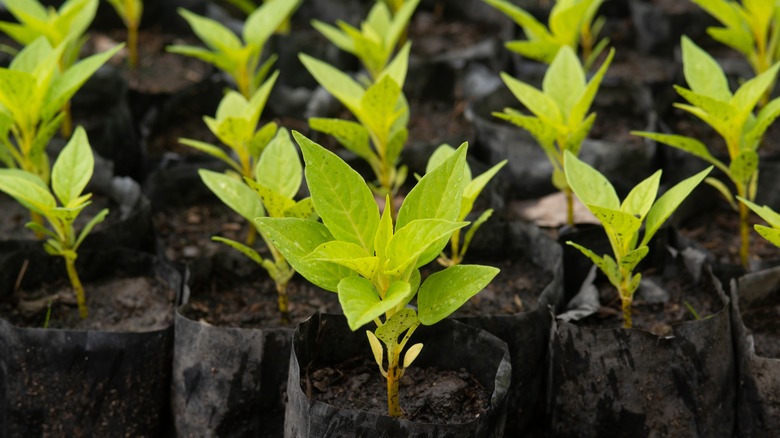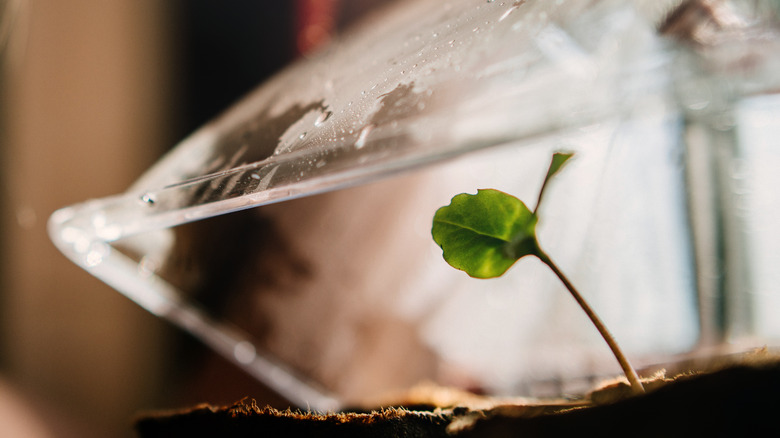This Simple Kitchen Item Transforms Potted Plants Into Mini Greenhouses
Although they may look inert and lifeless, seeds are living entities. Every seed is a tiny plant-making factory. They contain embryonic tissue that begins to grow when the right conditions are met. For most seeds, those conditions include darkness, moisture, and warmth, although some seeds need light to germinate. Check your seed package to find out what yours need. A greenhouse is typically the best way to start seeds indoors. However, even if you don't have a large backyard greenhouse, you can recreate these conditions with items you probably have around the house.
Turn your plant pots into a mini greenhouse by covering them with plastic wrap. Use press-and-seal plastic wrap to make it even easier to apply and remove the plastic covering. The plastic wrap helps hold in the moisture and warmth so the seeds don't dry out. You'll need to poke holes in the plastic wrap because seedlings also need air circulation.
For best results, water your seeds from the bottom to avoid disturbing them. If you're using plant pots with drainage holes, you can simply set the pot in a tray and add water to the tray. Once your seeds germinate, remove the plastic wrap so the plants can grow. Continue to check that the seedlings are getting enough light, water, and warmth.
Other ways to improvise a mini greenhouse
Covering pots with plastic wrap isn't the only way to create a makeshift greenhouse. With a little ingenuity, you can DIY a mini makeshift greenhouse using repurposed items to help your plants thrive. Set clear plastic cups directly over seedlings or young plants for an instant greenhouse effect. You can also use a clear plastic box. Just turn it upside down and set it over several potted plants. Or use it upright and put the top on loosely while your seeds are germinating.
If you're willing to put in a bit more effort, you can build a small seedling greenhouse out of plastic and PVC pipe. If you haven't worked with PVC before, it's basically the adult version of Tinkertoys. You can get rods in multiple sizes and join them together with connectors. For this project, you'll be building a rectangle out of 1-inch PVC pipe. You can make it any size you like. Cut four rods to the desired length. PVC pipe cutters make short work of this. Cut eight rods to the width and depth you want. Lay out your rods, and join them together at each corner with a three-way connector. You'll need eight, one for each corner.
You can buy PVC pipe cement to make the connections permanent. However, just pushing them together will give you the most flexibility since you can take it apart and repurpose extra PVC pipes when the season is over. Now that you have the frame, cover it with a sheet of UV-rated greenhouse plastic. Cut the sheet to be large enough to wrap the frame. Finally, use 1-inch snap clamps to attach the plastic to the frame.

